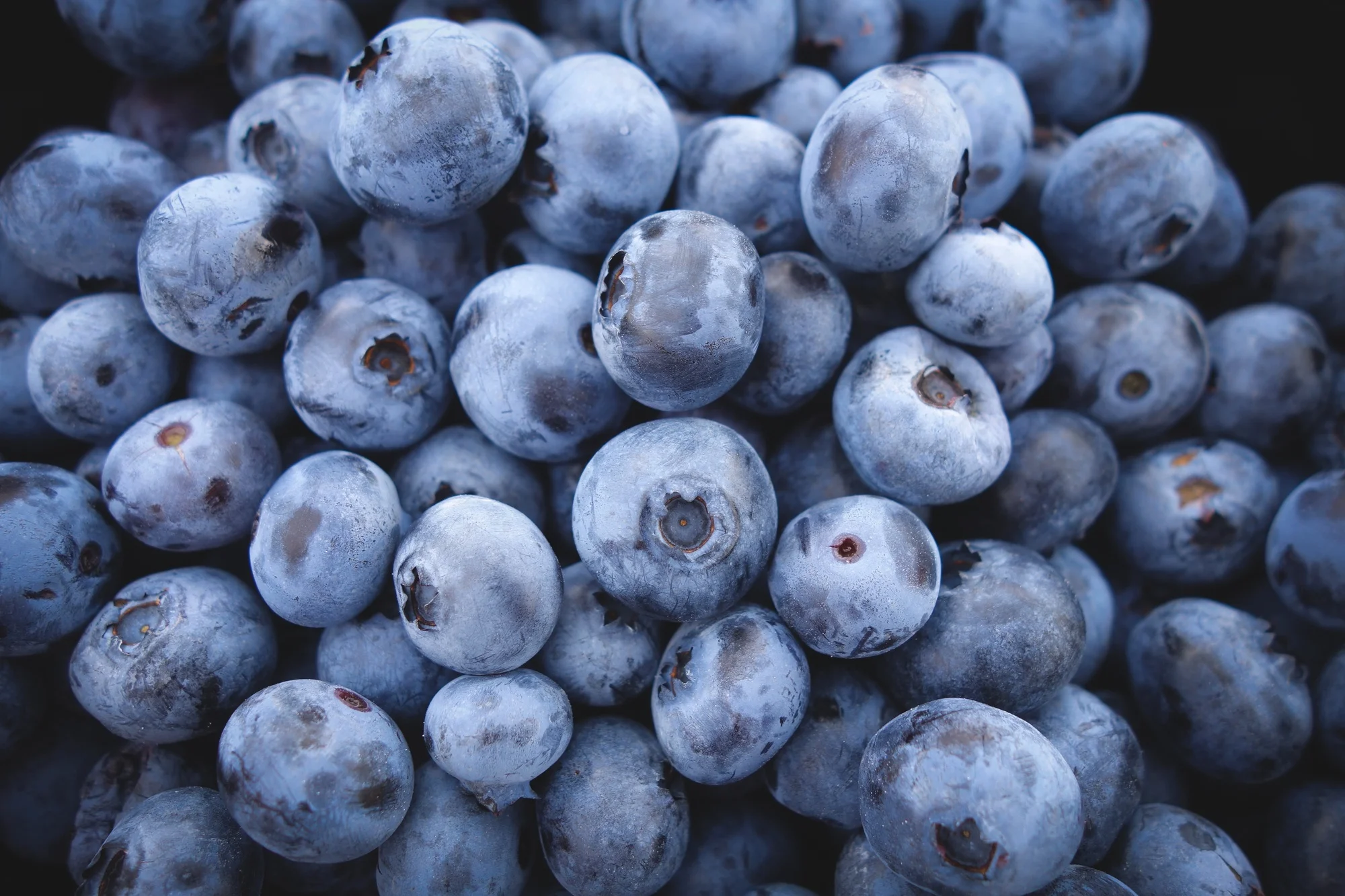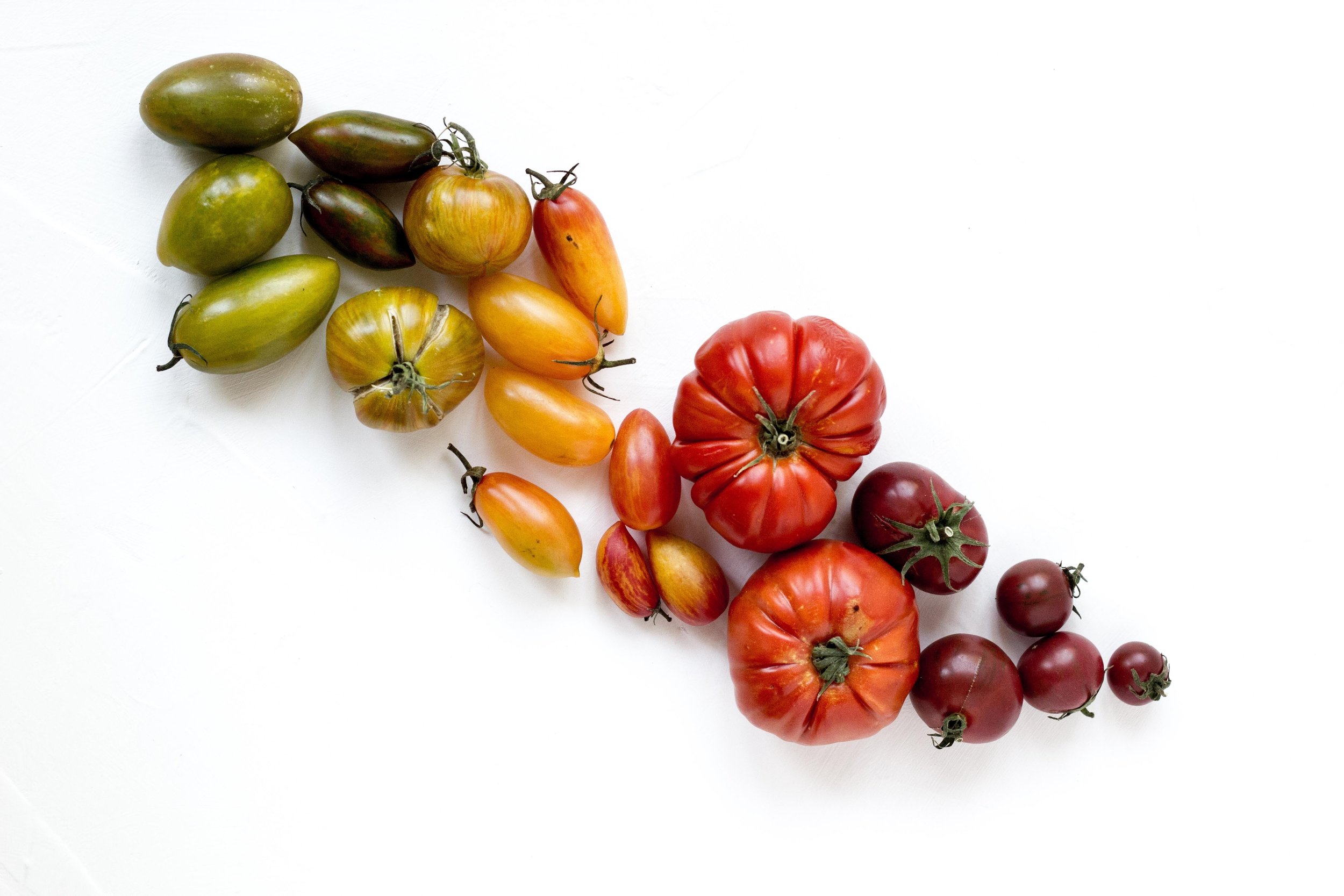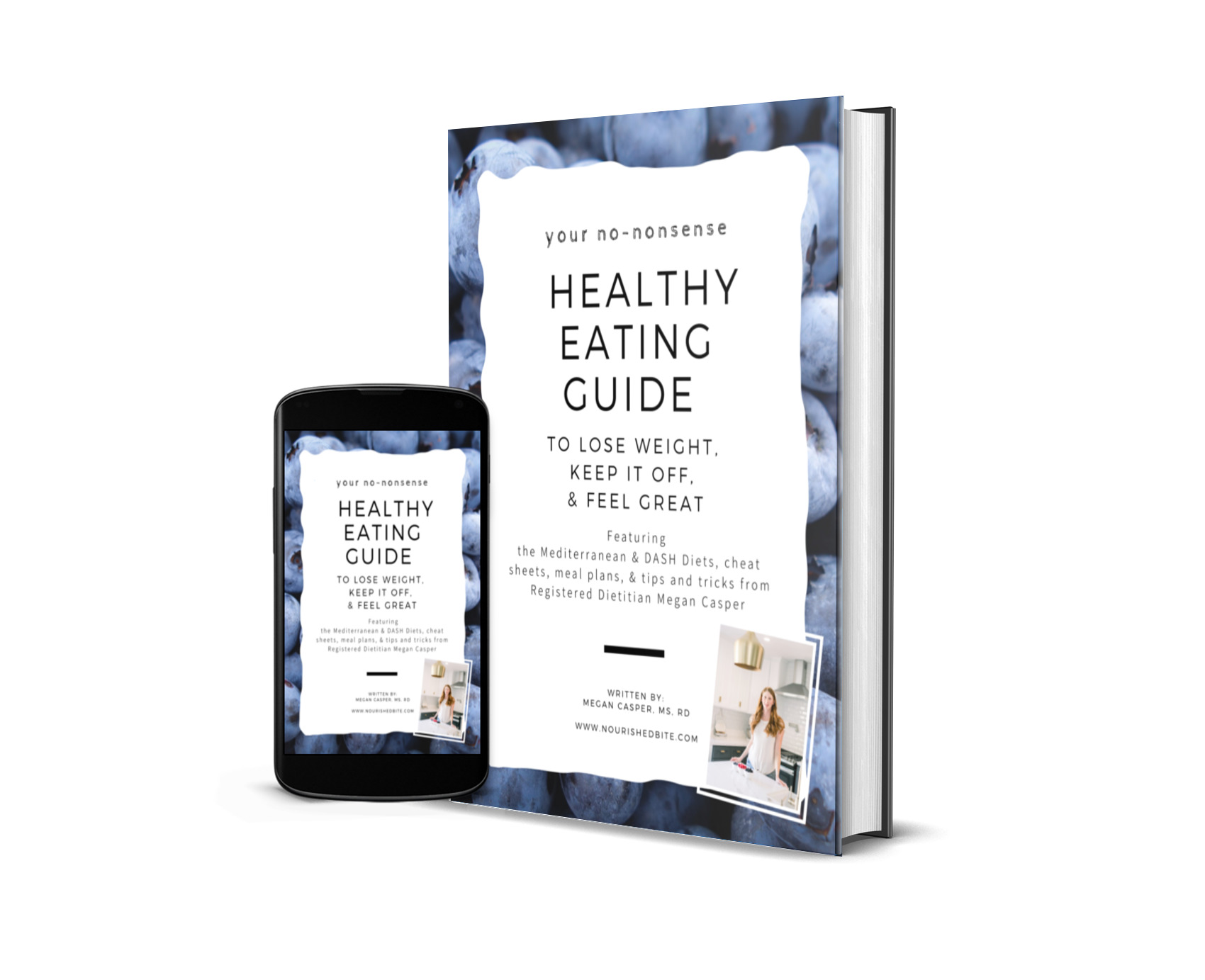Summer's Best Seasonal Fruits and Vegetables
/It’s summer! Farm stands are bursting with delicious, fresh fruits and veggies all across the country. As if you needed any more inspiration to snatch some up, here’s a list of some of the best fruits and veggies out now, and why they’re good for you!
Instead of being plucked half-ripened and shipped across the country, seasonal produce spends longer on the vine or tree and can be harvested when it’s ready, giving it a boost in both flavor and nutrition (and it may even be easier on your wallet too).
APPLES: While apples are usually thought of as a fall food, some varieties start being harvested in the summer. You’ve heard the old adage - “An apple a day keeps the doctor away”, but what makes apples so special? Apples are high in cold-fighting vitamin C, belly filling fiber, and inflammation soothing antioxidants. They’ve been linked to reduced risks of cancer, asthma, diabetes and heart disease. Unfortunately, apples regularly make the “Dirty Dozen” list - the Environmental Working Group’s list of produce with the most pesticides. Since many of the health benefits are found in the peel, choose organic apples or grab your friends and pick your own. To serve, crunch into a raw apple, spread on some nut butter, or bake an apple crumble.
BEETS: It’s really hard to beet (har har) the health benefits of this root vegetable. Beets are an excellent source of folate, and a good source of iron, B6, potassium and vitamin C. Perhaps even more impressively, they contain betalains, a phytonutrient lauded for its ability to protect against cancer and free radicals, reduce inflammation, and support detoxification. Beets also are high in dietary nitrate, which helps to lower blood pressure and protects the cardiovascular system. Looking for a natural boost to your workouts? Some studies have found that beetroot juice can increase endurance and strength. I love them served with a sprinkle of goat cheese, roasted with other root vegetables, or mixed into a cold salad with a splash of vinegar. Don’t chuck the greens - they’re high in the antioxidant lutein, which helps keep eyes healthy.
BERRIES: You really can’t go wrong these little guys. They are small but mighty! While they have different antioxidants and phytonutrients which give them their cheery hues, they are linked to reduced rates of cancer, heart disease, and inflammation. Berries are rich in fiber and several vitamins and minerals such as vitamin C. Blueberries contain antioxidants called anthocyanins, which help prevent against DNA damage which in turn protects us from aging and cancer. Strawberries are crazy high in vitamin C, with just one cup containing more than 100% of the daily recommendation. Raspberries boast dozens of different types of phytonutrients, but one standout - ellagic acid - has been shown to fend off cancer. Berries are one of the highest antioxidant foods that we commonly eat, so pop them regularly like candy, mix them in yogurt or a smoothie, or toss them in a fruit cup.
BROCCOLI: This veggie deserves its health halo! It’s crazy high in vitamin K (over 200% per cup), which keeps bones strong and blood cells healthy. It also boasts over 100% vitamin C per serving and is a good source of metabolism boosting chromium and folate. Broccoli is also high in phytochemicals like sulforaphane, which blocks susceptibility to carcinogens and helps fight cancer, and quercetin, which helps lower blood pressure. Since many of us squish our noses at the idea of soggy broccoli, isn’t it good news that the biggest health benefits - and flavor - come from lightly steaming it?
CARROTS: There are many shades of carrots but the most common one is orange. While these lanky guys don’t have the same punch as their purple ancestors, they still are a good source of cholesterol lowering fiber, vitamin K, potassium and antioxidants. They also are brimming with beta-carotene, which is good for our eyes. To maintain the best health benefits, try scrubbing carrots with a strong bristled brush to remove dirt instead of peeling them since most of the nutrients - like many fruits and vegetables - is near the skin or directly beneath it. (This is also why you should say “no thank you” to baby carrots since, cute name aside, they’re just whittled down bigger carrots.) Beta-carotene is also better absorbed in cooked carrots and served with a little fat.
CHERRIES: These sweet, delicious little guys pop up in stores around July. They get their telltale dark shade from their high anthocyanin content, a photochemical and antioxidant linked to all sorts of good health benefits (like the prevention of cancer, cardiovascular disease, diabetes, inflammatory diseases, arthritis, and Alzheimer's disease). Eat them alone or toss them on a salad for a sweet treat.
EGGPLANTS: These veggies are a feature of the mediterranean diet, so they’ve gotta be doing something right. If you’re looking for something light and filling, eggplant is low-cal, but high in water and fiber - a combination that will fill up your stomach. Need a brain boost? The anthocyanins found in eggplants have been shown to help prevent inflammation in the brain and improve blood flow, which may help improve memory. They also may help lower cholesterol, keep the cardiovascular system healthy, and protect against cancer. Try making your own babaganoush, grab your veggies from the garden and stew some ratatouille (I LOVE this in the summer!), or cut into thin strips coated in olive oil and grill.
HERBS: Which such a wide variety out there, herbs really do deserve their own post, don’t you think? Herbs are typically plants that are beloved for their scent, flavor, and medicinal benefits. Their tiny little leaves are rich in powerful antioxidants, phytosterols, vitamins and other nutrients - all things that are good for your health and the prevention of diseases. Health benefits aside, herbs are just yummy AND they’re easy to grow even in the smallest of gardens. They’re a great way to reduce salt intake while making flavorful, delicious dishes. My favorites: basil (I love it in hummus with some lemon, ground into pesto or sprinkled in all sorts of dishes), rosemary (roasted in chicken), parsley (sprinkled on fish, chopped into tabbouleh, ..), and tarragon (whipped into eggs).
LEAFY GREENS: While leafy greens are widely available from greenhouses throughout the year, the summer is a perfect time to try to grow your own at home in a container. Dark leafy greens, like lettuce, mesclun, spinach, beet greens and turnip greens, are good sources of many vitamins (A, C, K and folate) and minerals (iron and calcium). They're also great sources of fiber, and an easy way to get your five veggies a day. Mix up a salad, sauté up a side, or add some crunch to your sandwich.
ONIONS: While they store well all year, onions start being harvested in late summer. No matter what color you grab, these pungent, flavorful bulbs are packed with flavor and all sorts of healthful goodies. Red onions contain anthocyanins (you’ve heard about those recently) while the brown and yellow varieties have quercetin, which reduces inflammation and helps with arthritis, blood pressure, and overall heart health. Onions are also high in sulfur compounds which, while they may make you tear up while chopping, also cut your risk of cancer. One caveat: a lot of onions are being bred these days to have tons of sugar. Try to look for the less sweet varieties, since those pungent flavors are what lend much of their health benefits. Onions are everywhere, so you probably already have your favorite dish. I like them tossed in a salad, sliced on top of a burger, and sauteed with other veggies. What’s your favorite recipe?
PEPPERS: Starting around July until the first frost, peppers add crunch and flavor to summer meals. From green to yellow to orange to red, these veggies are full of vitamin C and E, which work together to nab free radicals and boost the immune system, and vitamin A, for healthy skin and eyes. They also have a sprinkling of tons of other vitamins, phytochemicals, and fiber and are over 90% water - so they’re hydrating too. Crunch into them raw with a dab of dip, roast them on the grill, or stew them with tomatoes and eggplant. Don’t forget chili peppers! These spicy little guys get their kick - and health benefits - from capsaicin, a compound that fights cancer, relieves pain, and even aids in weight loss.
SCALLIONS: Add flavor to your plate with the addition of these mini onions. Not only are they filled with vitamins A and K, antioxidants, and fiber, they are also super easy to grow - a fact I stumbled upon when I had too many after grabbing some at the grocery store and stuck the leftovers directly into a pot of soil. Snip some off the top and garnish your next meal.
SPINACH: One cup of spinach has about 1000% (that’s right, a thousand percent!!) of your daily needed vitamin K. It also has an impressive resume of other vitamins and minerals - A, folate and other B vitamins, C, manganese, magnesium, iron, copper, calcium.. The list goes on and on. You probably usually think of dairy as a great source of calcium, but that one cup o’ spinach actually has a quarter of what you need each day. It also is high in phytochemicals, phenols, that are potent against inflammation. No wonder Popeye was tough, right? Go classic with a salad, sauteé with garlic and a pinch of pine nuts, or sneak some into smoothies, eggs, sandwiches, etc.
TOMATOES: I loooooooooooove tomatoes. I would drink the sauce straight from the jar if I could and one of my favorite times of years is summer when fresh, sun-warmed, glorious tomatoes can be plucked from the vine (and popped right in my mouth.) Tomatoes’ main antioxidant is lycopene, and it has been shown to help enhance immunity, bolster the cardiovascular system, reduce the risk of cancer, boost bone strength and even reduce the risk of sunburn. Luckily the best ways to increase absorption of this antioxidant are also amazingly delicious. Since lycopene is fat-soluble, eat tomatoes with fat (aka: drizzle some olive oil on) to increase its potency. Cooking tomatoes can increase the antioxidant levels by 62 percent! (See why I want to drink the sauce straight? PS: My favorite is the marinara by Victoria. Simple, very few ingredients, and it just tastes fresh!)
WATERMELON: This refreshing, low-calorie snack gets it's red hue from lycopene, the same antioxidant that tomatoes are famous for, which may protect against UV damage and cancer. Watermelon may also help to lower blood pressure and reduce the risk of cardiovascular disease. Due to it's high water volume and loads of fiber, it's also great for keeping you hydrated and weight loss. Keep it simple and grab a slice, chop it up and sprinkle with feta, or add to a smoothie.
If your summer fave didnt make the list it does NOT mean it's not amazing. These just happen to be superstars when it comes to their nutritional profile, but all fruits and veggies are welcome! What are your summer favorites?






